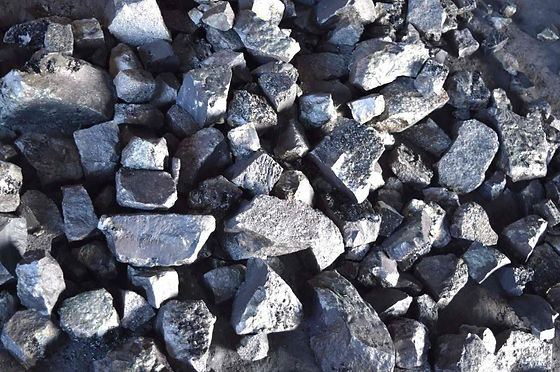
A silicon-manganese alloy is a ferro-alloy. It is a compound deoxidizer and is used to remove phosphorus. It is a hard material to machine. Hadfield's invention was the first to incorporate this compound.
In the steel industry, a compound deoxidizer is a substance added to steel to reduce its oxygen content. Common deoxidizers include aluminum, manganese, and silicon. Silicon is usually added in the form of an alloy with manganese. A compound deoxidizer containing manganese is called a Si-Mn alloy.
Its deoxidizing effect on steel is attributed to the fact that its inclusions are predominantly solid SiO2. This means that the inclusions that are present in steel will eventually become liquid. The liquid inclusions are easier to separate from the steel. Thapliyal et al. studied the effect of three FeTi additions to low-alloyed Si-Mn steels, each made at a 10-minute interval.

Ferro-alloys are substances that are composed of two or more metals. These materials have a relatively low melting point and are therefore widely used in the steel industry. The main uses of ferromanganese include deoxidizing steel. The alloy is produced by heating manganese and carbon in a blast furnace.
Ferroalloys made from silicon-manganese metal can be used for a variety of steelmaking processes. In addition to serving as an alloying agent, silicon ferroalloys are used as deoxidizers. Silicon is a better deoxidizer than aluminum, which can cause defects due to precipitated alumina. In combination with manganese, silicon-manganese alloys are more effective deoxidizers.
Silicon-manganese alloy is a popular dephosphorizing alloy used in the steel industry. This alloy reduces the surface activity of phosphorus, which inhibits oxidation and transfer to slag. It is a cost-effective, environmentally-friendly way to remove phosphorus.
The process is commonly referred to as desliconization, and it helps form high-basicity in-blow slags that are conducive to phosphorus removal. However, low silicon content in the hot metal prevents this process from working, and high phosphorus partition coefficients are needed to deal with the high phosphorus content of Indian hot metal.
Silicon-manganese alloy is an extremely hard material, making it difficult to machine in the steel industry. This material has a high carbon content and a high manganese content. The result is a metal that is very hard but also has excellent ductility and toughness. Silicon-manganese steel is used in various applications and has similar functions to carbon steel. It is very difficult to machine, however, and is usually cut with laser or plasma arc cutting technology.
The mangalloy alloy is extremely difficult to machine, and can only be annealed if the alloy is softened by a process. The alloy hardens rapidly under grinding or cutting tools, so it must be machined with specialized tooling. Due to its toughness, it can also be forged and drilled, but this process is very difficult. It can be cut with an oxy-acetylene torch, but is preferred for plasma cutting.

Write a Message